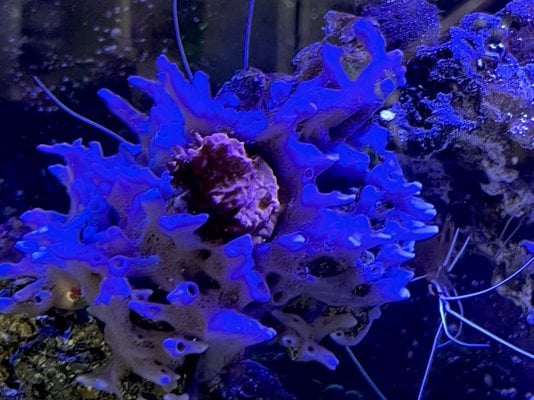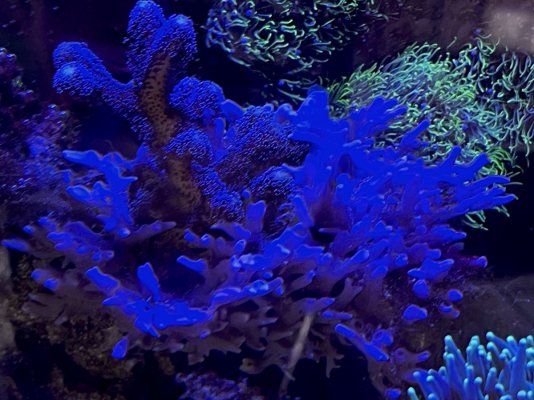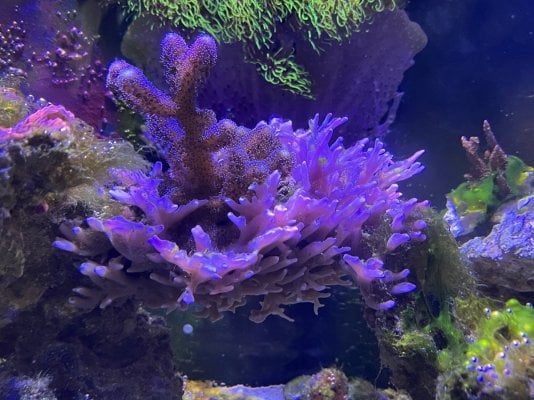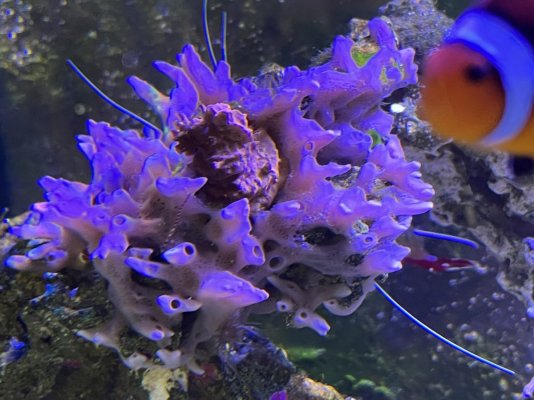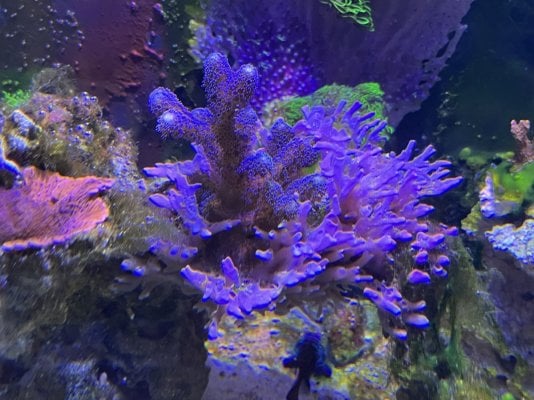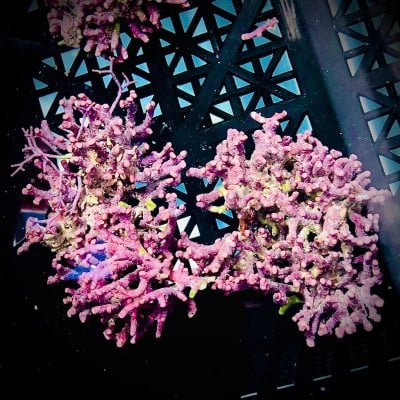Navigation
Install the app
How to install the app on iOS
Follow along with the video below to see how to install our site as a web app on your home screen.
Note: This feature may not be available in some browsers.
More options
You are using an out of date browser. It may not display this or other websites correctly.
You should upgrade or use an alternative browser.
You should upgrade or use an alternative browser.
Good or bad sponges?
- Thread starter Hross
- Start date
- Tagged users None
vetteguy53081
Well known Member and monster tank lover
View Badges
Partner Member 2024
Excellence Award
Reef Tank 365
RGB
Article Contributor
Tampa Bay Reef Keepers
West Palm Beach Reefer
Hospitality Award
Ocala Reef Club Member
305 Reef Club
Wisco Reefers
Midwest Reefer
Fish Medic
MAC of SW Florida
Rock Pool Reef Keepers
R2R Secret Santa 2023
My Tank Thread
My Aquarium Showcase
My guess is branching coralline algae or some kind of colonial tunicate like @vetteguy53081 said
Here's a picture of branching coralline incase anyone is unawareMy guess is branching coralline algae or some kind of colonial tunicate like @vetteguy53081 said
Attachments
Branching coralline looks so interesting. This stuff is very squishy though. I tried to remove some and it just came off in little squish blobs, then grew right back. Maybe that helps with the ID? The blennies love to lay in it
Ok definitely not branching coralline then.Branching coralline looks so interesting. This stuff is very squishy though. I tried to remove some and it just came off in little squish blobs, then grew right back. Maybe that helps with the ID? The blennies love to lay in it
vetteguy53081
Well known Member and monster tank lover
View Badges
Partner Member 2024
Excellence Award
Reef Tank 365
RGB
Article Contributor
Tampa Bay Reef Keepers
West Palm Beach Reefer
Hospitality Award
Ocala Reef Club Member
305 Reef Club
Wisco Reefers
Midwest Reefer
Fish Medic
MAC of SW Florida
Rock Pool Reef Keepers
R2R Secret Santa 2023
My Tank Thread
My Aquarium Showcase
Filter feeding tunicatesThanks Vetteguy, I might not know my tunicates from my spongesLet's try these pics:
These are definitely sponges (the shape is pretty common for a variety of different sponges) - for differentiating from colonial tunicates, see the first quote below, for if you should be worried or not, see the second; personally, if it's not harmful, I'd keep it:
colonial tunicates are typically very uniform, with all of the in-current siphons being roughly the same size and shape and being distributed very uniformly as well; sponges tend to be less uniform and more haphazard with their in-current siphons;
Yeah, that's definitely a sponge. Most sponges are completely harmless/beneficial, but some can be invasive and/or harmful to corals (thankfully, these are rare).
To tell if a sponge is chemically harmful: if a healthy, established coral starts closing up or looking to be in bad shape on the side closest to the sponge as the sponge grows closer to it, and nothing else has happened (lighting changes, parameter swings, pests, etc.) that could explain it, then the sponge is probably chemically harmful.
Chemically harmful sponges are very rare.
For invasive sponges: unless it shows signs of being chemically harmful or starts actively growing over and smothering a coral's flesh/polyps, it's harmless. These can grow over the skeletons of corals, around the base/stalks of corals, even up into the water column above corals (where they're over the coral but not growing on the flesh or polyps themselves), etc. without harming the coral at all - as long as the coral flesh and polyps can get food, light, and flow, the sponge is harmless.
Invasive sponges are moderately rare.
Invasive and chemically harmful sponges are incredibly rare.
I knew you'd knowThese are definitely sponges (the shape is pretty common for a variety of different sponges) - for differentiating from colonial tunicates, see the first quote below, for if you should be worried or not, see the second; personally, if it's not harmful, I'd keep it:
NopeFilter feeding tunicates
Similar threads
- Replies
- 2
- Views
- 171
TOP 10 Trending Threads
- Replies
- 24
- Views
- 141


